Londonderry Air
As lilting as its namesake tune which accompanies the lyrics to ‘Danny Boy’, Londonderry is the second largest city in Northern Ireland and, like so many of the destinations we’ve visited on this trip, it is situated on a major river. The River Foyle is a fast flowing tidal river that empties into the nearby Lough Foyle1 on the Atlantic Ocean. The old walled city lies on the hilly west bank of the River Foyle known as Cityside, but the train station, where the track comes to a dead end, is on the more rural east side of the river known as Waterside. While Londonderry is the legal name of the city, it is more commonly referred to as Derry2, a name which the Catholic nationalists prefer. The river is easily traversed on foot between Waterside and Cityside using the double deck, pedestrian friendly Craigavon Bridge which also affords some interesting views of the surrounding area and a straight shot at the Peace Bridge, a modern new cycle and foot bridge farther north.
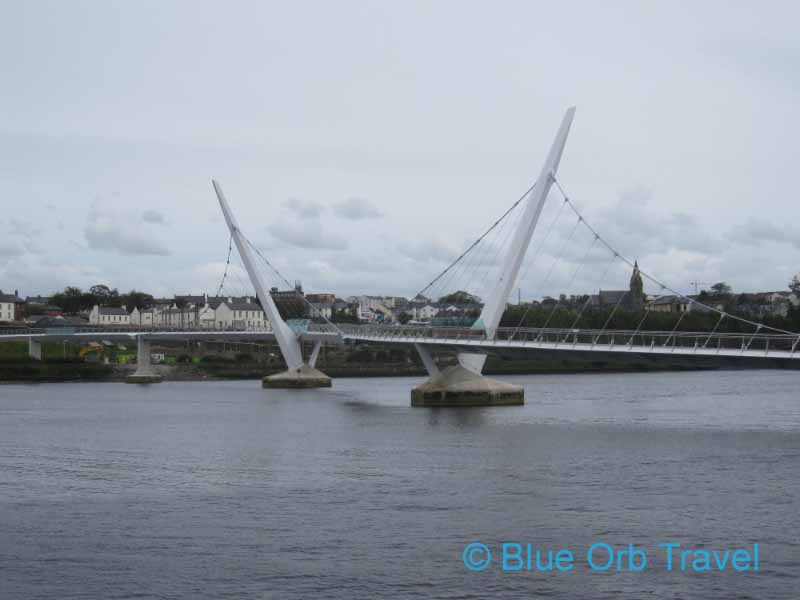
The Waterside
There is only one remaining train station in Londonderry and it is located on the Waterside. Opened in 1852 and notable for its impressive clock tower, the station provides easy access to all of Londonderry. Unfortunately, the track ends here and the only service at this station is the line to and from Belfast, which takes two hours and costs $17. Fortunately, there is a modern bus station on the Cityside that provides excellent service to points south. Just up the hill and around the corner from the train station on the Waterside I found a wonderful place to stay call the Iona Bed and Breakfast, which I will feature in my next article.
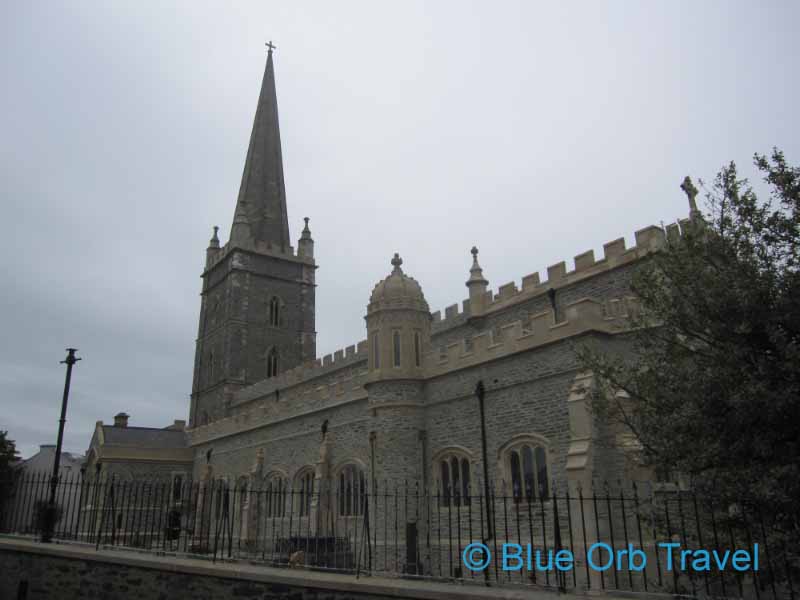
The largely Protestant Waterside area has a number of quaint shops, small businesses and attractive residences. Walking uphill to the north you pass the Ebrington Barracks where British troops were stationed until 2006 and which is now being redeveloped into a shopping and residential area. A few steps farther along you will come to St. Columb’s Park located on an angle promontory overlooking the river and across the water to the Cityside. A large, beautifully renovated Georgian house located within the park and now used for seminars and meetings is definitely worth a peak.
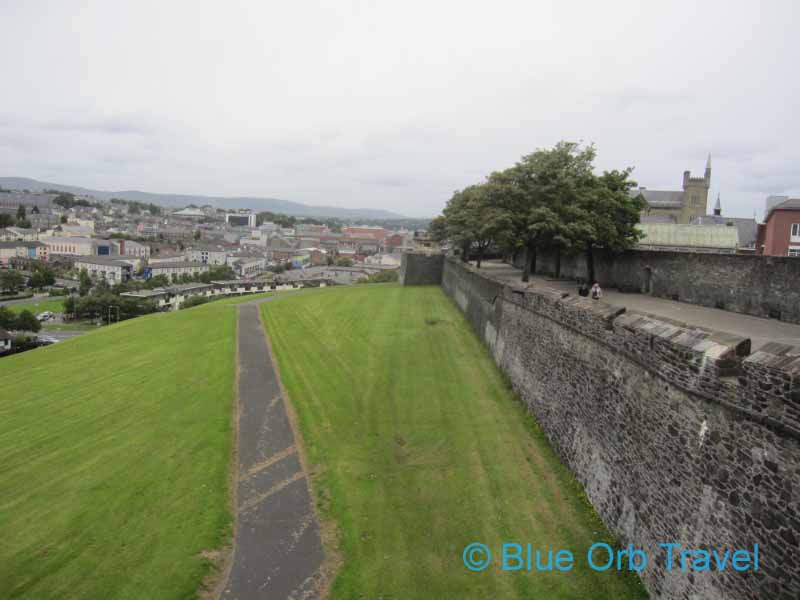
The Walled City
Across the River Foyle on the Cityside are the city walls built between 1613 and 1618 as defenses for the settlers from Scotland and England. They give Derry the distinction of being the only completely walled city in Ireland and visitors can walk along sections of the wall for some great views of the city and surrounding area. Derry is one of the oldest inhabited places in Ireland and has many landmarks to show for it. A walking tour of Derry will take you to the Guildhall, the Heritage Tower and several beautiful cathedrals, including St. Eugene’s Cathedral and St. Columb’s Cathedral, which is thought to have been the inspiration for John Newton’s famous hymn, Amazing Grace. Right in the midst of these older buildings is an area with a modern new shopping center. I took a short walk outside of town to visit the Magee campus of the University of Ulster and see its interesting mixture of traditional architecture and modern new facilities.
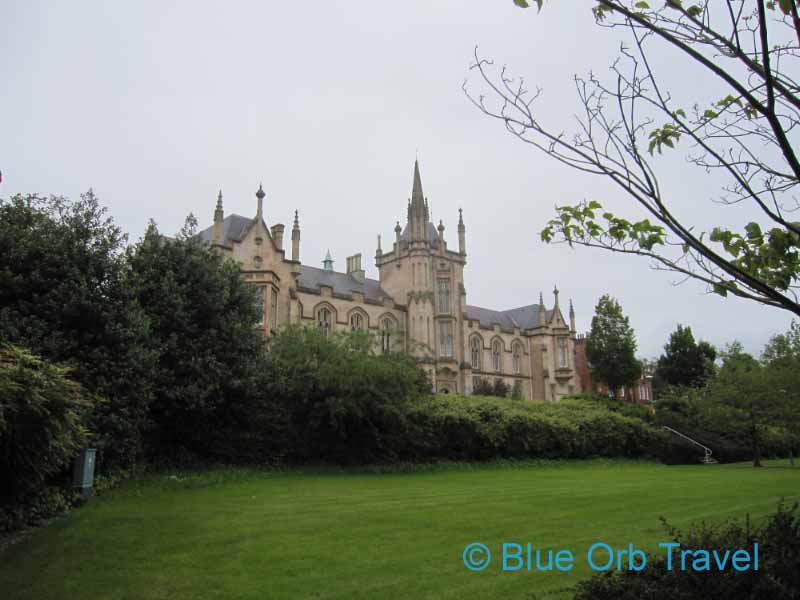
Stigmata of ‘The Troubles’
In recent years Londonderry has been center stage for the strife between Catholic nationalists and Protestant unionists, also known as ‘The Troubles’. As a result of this now largely resolved conflict, most of the Protestants moved to the Waterside, leaving Catholics in the majority on the Cityside. It would be impossible for visitors to miss the many reminders of this difficult time in Irish history when touring Derry. Looking west from the city walls across a large grassy knoll is a broad valley known as The Bogside and this is where many of the events of ‘The Troubles’ took place and where they are now memorialized.

The main events are commemorated on a square known as Free Derry Corner. Here you will find several monuments, including the H Block Memorial commemorating the hunger strikes of 1981, as well as several nearby Catholic wall murals. It is here and in the surrounding streets that the riots known as the Battle of the Bogside took place in August 1969. Considered to be one of the first incidents of ‘The Troubles’, it started when nationalists protested a loyalist parade and ended with the deployment of British Troops. Also nearby is the site of Bloody Sunday, an incident in which British troops fired on civil rights protesters, killing 14 of them in January 1972. In spite of these visible reminders, I found no remaining evidence of conflict during my visit and would not hesitate to encourage travelers to experience this beautiful and historic city and mingle with its friendly inhabitants.
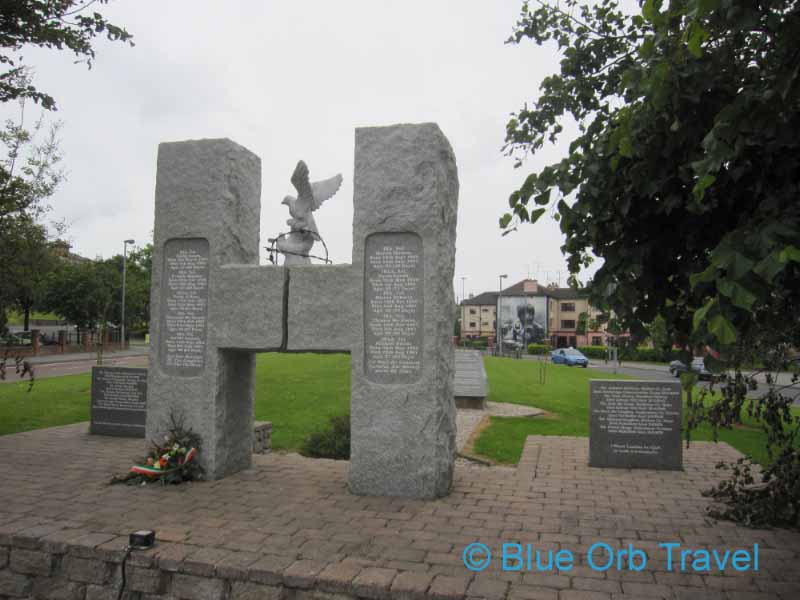
1 Lough is related to the word Loch and both are pronounced as lock, meaning lake or bay. In this case it refers to an estuary, bay or sea inlet.
2 The name derry comes from the Irish word doire meaning ‘oak grove’.
